When you mention the year 2001, one event comes to most Americans’ minds. The events of September 11, 2001 changed the course of history and things have never been the same. It was also the year that I graduated from high school and left for college. When 9/11 happened, I was in my first semester of college and was over 200 miles from the only home I had ever known.
Little did we know that our little college campus would be rocked with a tragedy less than two week afterwards that felt more significant than towers falling. There was a van accident which killed three of my peers as they were returning from a ministry event. It was a very sad time, but it drew me closer to the beautiful woman that would become my wife. We grieved together and drew strength from each other’s faith.
Film was one of the last thing on my mind during that time, but it seemed that just a few months after this tragedy many Americans were finding refuge from the pain of reality through the imagination of a handful of master storytellers. Two film franchises were born during this year and they would persist for many years following. I’m speaking of Harry Potter and the Sorcerer’s Stone, and Lord of the Rings: The Fellowship of the Ring.
While both of these were good films and left a lasting impression on film, they are merely footnotes or honorable mentions in this competition for the best film of the year. Before I get to my top 3 films of the year, you should know that the Academy Award for Best Picture went to my 4th best movie of the year, A Beautiful Mind. Other honorable mentions are: Amelie, The Others, Donnie Darko, Training Day, The Royal Tenenbaums, and Ocean’s Eleven. All of my Top 3 are at least a bit surreal and dive into and out of the deepest and most intimate place in all of us, our memory. That is appropriate since I have such deep memories of this year.
#1 – Spirited Away
 The first time you watch Spirited Away you are blown away by the visuals. Hayao Mizayaki’s decadent hand drawn animation is always moving and is totally beautiful. You are left thinking about the meaning and the symbolism that is deep under the surface of this story of a young girl who gets lost in a spirit world and has to find her way back. Every time after that, you will be sucked deeper into the symbolism until you realize that this is a commentary on growing up in a Capitalist culture but not losing the innocent wonder of childhood.
The first time you watch Spirited Away you are blown away by the visuals. Hayao Mizayaki’s decadent hand drawn animation is always moving and is totally beautiful. You are left thinking about the meaning and the symbolism that is deep under the surface of this story of a young girl who gets lost in a spirit world and has to find her way back. Every time after that, you will be sucked deeper into the symbolism until you realize that this is a commentary on growing up in a Capitalist culture but not losing the innocent wonder of childhood.
Chihiro means “thousand questions.” It means that she is inquisitive and takes nothing for granted. We see this wide eyed girl lose her parents to greed and consumerism. She gets a job at a bath house and trades away part of her name. The name is a symbol of a person’s character and she becomes Sen which means “thousand.” Literally, the questions have been removed. She is warned not to forget her name because that is the secret for her escape. I won’t go any deeper than that in case you haven’t seen it, but I just might do a full spoiler laden breakdown at some point.
#2 – Memento
 Technically, Memento was released in 2000 but it wasn’t seen on US soil until 2001, so I had to put it in this year. Long before Christoper Nolan started diving into the brains of his characters and viewers in Inception, he was beginning at the end with Memento. Simply put, it is the non-simple, non-linear story of Leonard who suffers from a Dory-like version of short-term memory loss. He retains memories from before his accident but cannot create any new memories. Instead, he litters his jacket pockets with Polaroid pictures and scraps of note paper, and covers the canvas of his body with tattoos to remind him of his overall purpose.
Technically, Memento was released in 2000 but it wasn’t seen on US soil until 2001, so I had to put it in this year. Long before Christoper Nolan started diving into the brains of his characters and viewers in Inception, he was beginning at the end with Memento. Simply put, it is the non-simple, non-linear story of Leonard who suffers from a Dory-like version of short-term memory loss. He retains memories from before his accident but cannot create any new memories. Instead, he litters his jacket pockets with Polaroid pictures and scraps of note paper, and covers the canvas of his body with tattoos to remind him of his overall purpose.
We learn through 22 vignettes that Leonard is hunting a man called John G. who is behind the rape and murder of his wife. I don’t want to spoil too much because it is such a fun puzzle to put together, but let me just say that you will be engaged and guessing with the story until the very end. This is one of the films that made Christopher Nolan the brand name that he is today.
#3 – Mulholland Drive
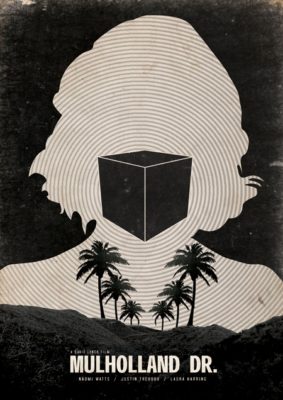 Have you ever had a dream that freaked you out and left you gasping for breath as you rushed back to consciousness? When your loved ones come in the room to check if you are okay all you can say is I had a bad dream. Invariably, they will ask what it was about, but we can’t say because the dream is quickly retreating into our sub conscience, and because no matter how well you explain what happened in the dream you sound psychotic. Mulholland Dr. is that creepy dream.
Have you ever had a dream that freaked you out and left you gasping for breath as you rushed back to consciousness? When your loved ones come in the room to check if you are okay all you can say is I had a bad dream. Invariably, they will ask what it was about, but we can’t say because the dream is quickly retreating into our sub conscience, and because no matter how well you explain what happened in the dream you sound psychotic. Mulholland Dr. is that creepy dream.
More people have become familiar with David Lynch since the new Twin Peaks was released. I would recommend this movie as a good starting place, but I would encourage you not to analyze too much. To truly enjoy it, you must surrender yourself to it. As Roger Ebert said, “If you require logic, see something else.” David Lynch loves to make films which defy logic, but Mulholland Dr. follows no conventional plot structure, it simply ebbs and flows like a dream.
Did I get something wrong? What would you change? Have you seen any of these three? Let me know in the comments or on social media.
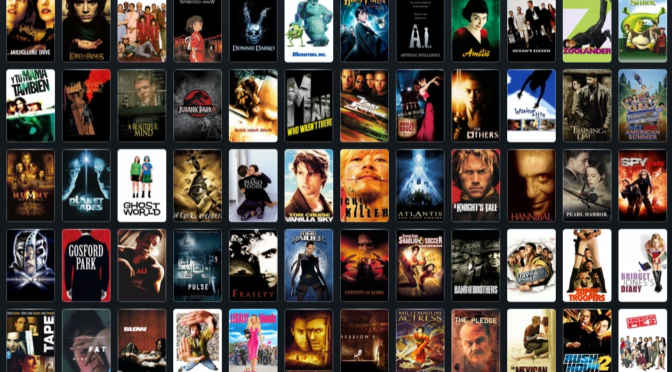
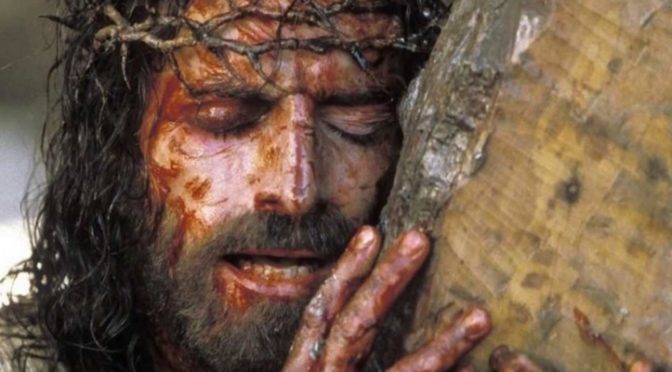

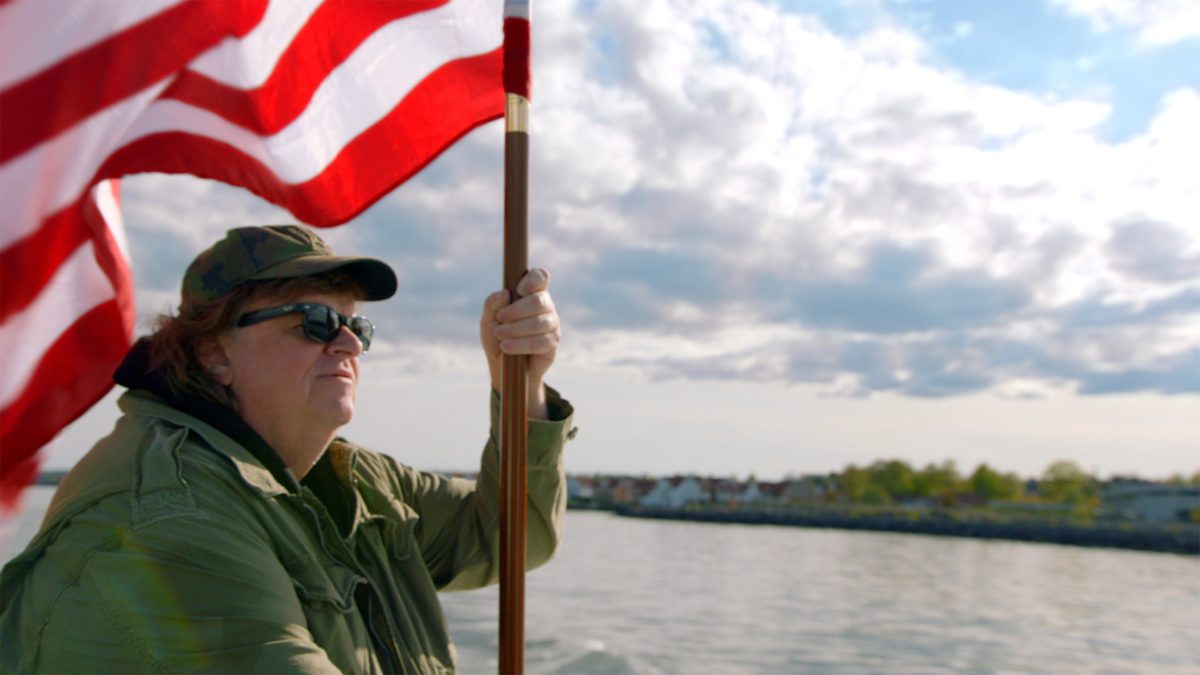
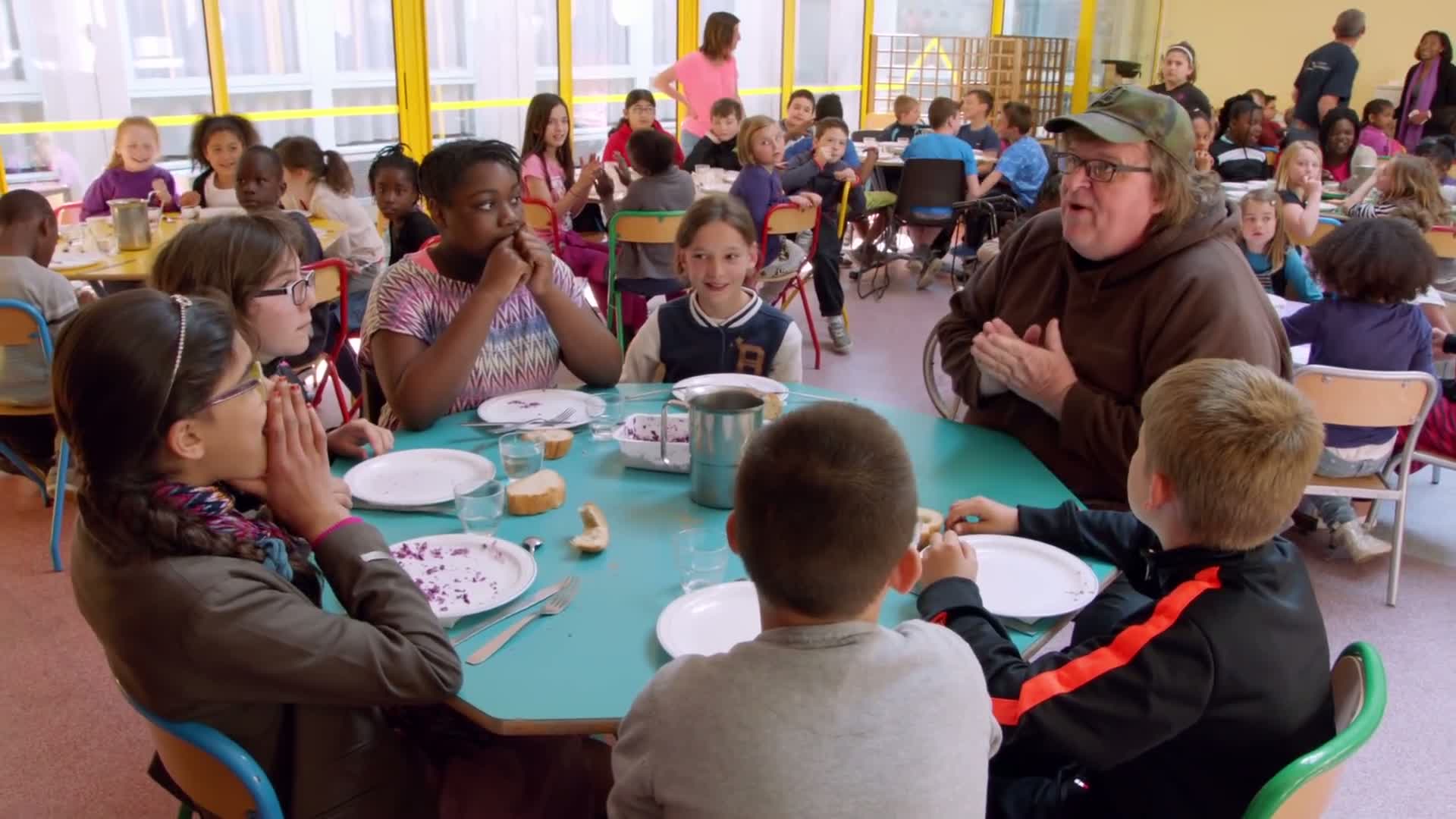
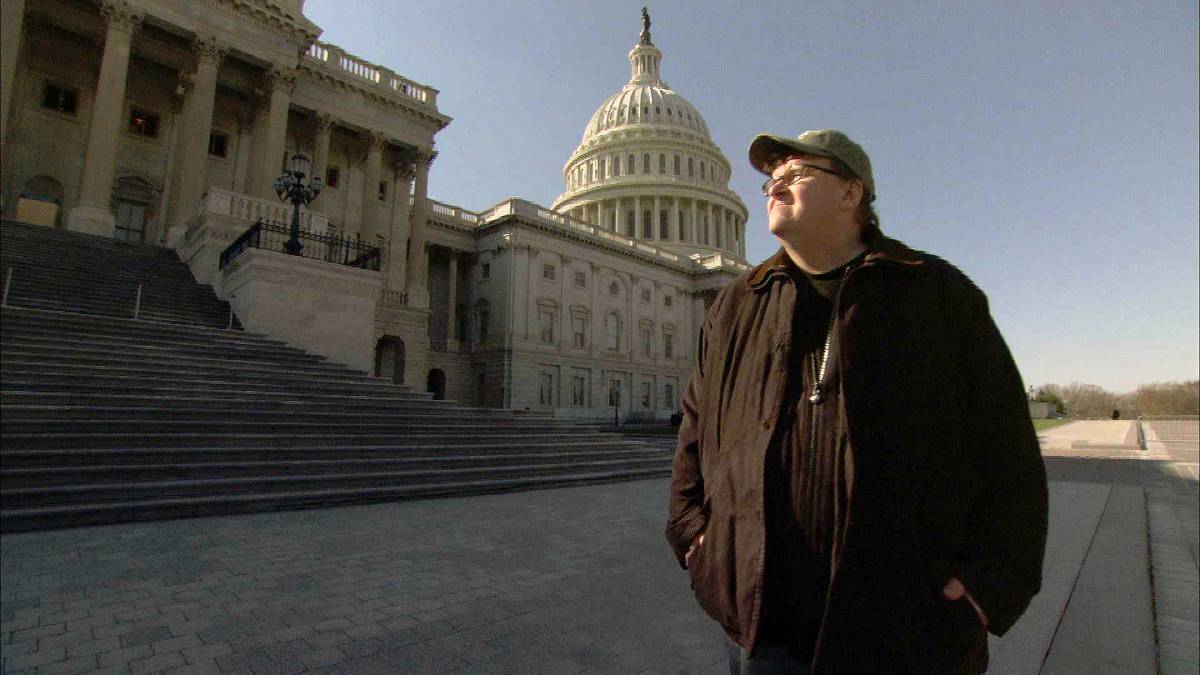

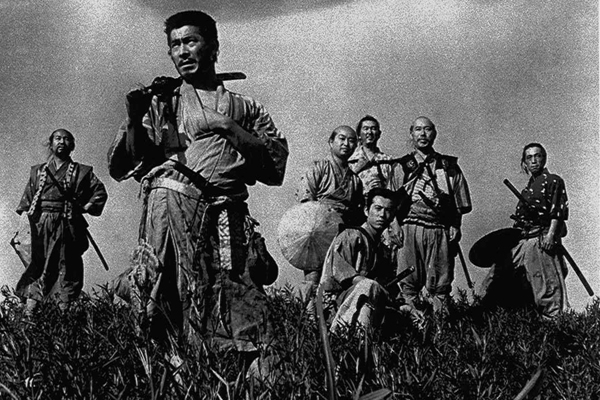 The Guns of Navarone (1961)
The Guns of Navarone (1961) Today’s challenge was simple. If I can only recommend one movie to anyone, it is this delightful gem from Roberto Benigni. And it is a rare occasion that they have already seen it. I wonder what prevents people from seeing this film. Is it the fact that it is a foreign film or maybe that there are no recognizable movie stars in it? Perhaps it is the fact that the subject matter is generally so depressing. But the funny yet haunting Life Is Beautiful, is quite possibly the best most satisfying movie I have ever seen.
Today’s challenge was simple. If I can only recommend one movie to anyone, it is this delightful gem from Roberto Benigni. And it is a rare occasion that they have already seen it. I wonder what prevents people from seeing this film. Is it the fact that it is a foreign film or maybe that there are no recognizable movie stars in it? Perhaps it is the fact that the subject matter is generally so depressing. But the funny yet haunting Life Is Beautiful, is quite possibly the best most satisfying movie I have ever seen. Fast-forwarding a few years, Guido, now owns a small bookstore. Guido and Dora have married and have a young son. It wasn’t until writing this review that I found that his son’s name is “Joshua” spelled Giosue (Giorgio Cantarini). A Nazi presence is now creeping into their Italian town, and signs have begun to appear in shop windows: “No Dogs or Jews Allowed” Guido, who we learn is Jewish himself, jokes to a confused Giosue that he should put up a sign on their store: “No Spiders or Visigoths Allowed.” The film shifts gears when his family is arrested and sent to a concentration camp. Dora, who is not Jewish, chooses to follow her husband and child. It is at this point that Life Is Beautiful changes into a very different film. I was impressed at how seamlessly the comedy moved into the world of the death camps.
Fast-forwarding a few years, Guido, now owns a small bookstore. Guido and Dora have married and have a young son. It wasn’t until writing this review that I found that his son’s name is “Joshua” spelled Giosue (Giorgio Cantarini). A Nazi presence is now creeping into their Italian town, and signs have begun to appear in shop windows: “No Dogs or Jews Allowed” Guido, who we learn is Jewish himself, jokes to a confused Giosue that he should put up a sign on their store: “No Spiders or Visigoths Allowed.” The film shifts gears when his family is arrested and sent to a concentration camp. Dora, who is not Jewish, chooses to follow her husband and child. It is at this point that Life Is Beautiful changes into a very different film. I was impressed at how seamlessly the comedy moved into the world of the death camps. There is almost too much to say about these three films. In fact, only one film in the trilogy actually made it onto the IMDB Top 250 list, that being the final film, Red. Although these are each excellent as stand-alone works, they are best when seen as a whole. For that reason, I am going to review each of them separately. For the unfamiliar, Polish director Krzysztof Kieslowski’s last work, “Three Colors Trilogy” takes its name from the colors of the French flag and its themes from the ideals represented by those colors: blue (liberty), white (equality), and red (friendship).
There is almost too much to say about these three films. In fact, only one film in the trilogy actually made it onto the IMDB Top 250 list, that being the final film, Red. Although these are each excellent as stand-alone works, they are best when seen as a whole. For that reason, I am going to review each of them separately. For the unfamiliar, Polish director Krzysztof Kieslowski’s last work, “Three Colors Trilogy” takes its name from the colors of the French flag and its themes from the ideals represented by those colors: blue (liberty), white (equality), and red (friendship). White is the second film in Kieslowski’s Trilogy, and it deals with the idea of equality. In my opinion, it may not be the strongest “film” of the three, but it is the one that I enjoyed the most. It maintains a balancing act between comedy and tragedy. The tone and feel of White was different, almost to the point of feeling out of sync, from the entire trilogy. The lead character is male unlike the other two films, even though Julie Delphy technically gets top billing, she only appears in about 15-20 minutes of the film. Polish actor, Zbigniew Zamachowski (Now you know why Delphy’s name was on all the promotional material!), puts in a powerful performance that goes from comedic pantomime to heartbreaking despair. Finally, White is told in a very plain way when you consider the imagery of Blue or the wonder of Red. White is simply less artsy, which is probably why I enjoyed it so much. Sometimes, forcing myself to sit through artsy films is like making my kids eat their vegetables, they don’t really want to do it, but they are good for them. I think most moviegoers could use a good dose of eating their cinematic vegetables and cut back on some of the “junk food,” but that is a post for another day.
White is the second film in Kieslowski’s Trilogy, and it deals with the idea of equality. In my opinion, it may not be the strongest “film” of the three, but it is the one that I enjoyed the most. It maintains a balancing act between comedy and tragedy. The tone and feel of White was different, almost to the point of feeling out of sync, from the entire trilogy. The lead character is male unlike the other two films, even though Julie Delphy technically gets top billing, she only appears in about 15-20 minutes of the film. Polish actor, Zbigniew Zamachowski (Now you know why Delphy’s name was on all the promotional material!), puts in a powerful performance that goes from comedic pantomime to heartbreaking despair. Finally, White is told in a very plain way when you consider the imagery of Blue or the wonder of Red. White is simply less artsy, which is probably why I enjoyed it so much. Sometimes, forcing myself to sit through artsy films is like making my kids eat their vegetables, they don’t really want to do it, but they are good for them. I think most moviegoers could use a good dose of eating their cinematic vegetables and cut back on some of the “junk food,” but that is a post for another day. He is forced, in the courtroom, to use a translator because his French is weak, this only adds to the feeling of his impotence, he can barely even stand up for himself. She testifies that she no longer loves him, and he pleads with her to come back to Poland with him. But after we see Juliette Binoche poke her head in the courtroom (a tie-in from Blue). The divorce is granted, and Karol is on the streets with all his possessions in a big suitcase. His bank account is frozen and Karol can do nothing but watch as a bank employee cuts up his card. And as if that weren’t enough, she also frames him for arson. Unfortunately, there is no background given to Dominique’s character to reveal why she has such hatred for Karol. We see images of her smiling face at their wedding, but besides that, she is merely painted as an evil character.
He is forced, in the courtroom, to use a translator because his French is weak, this only adds to the feeling of his impotence, he can barely even stand up for himself. She testifies that she no longer loves him, and he pleads with her to come back to Poland with him. But after we see Juliette Binoche poke her head in the courtroom (a tie-in from Blue). The divorce is granted, and Karol is on the streets with all his possessions in a big suitcase. His bank account is frozen and Karol can do nothing but watch as a bank employee cuts up his card. And as if that weren’t enough, she also frames him for arson. Unfortunately, there is no background given to Dominique’s character to reveal why she has such hatred for Karol. We see images of her smiling face at their wedding, but besides that, she is merely painted as an evil character.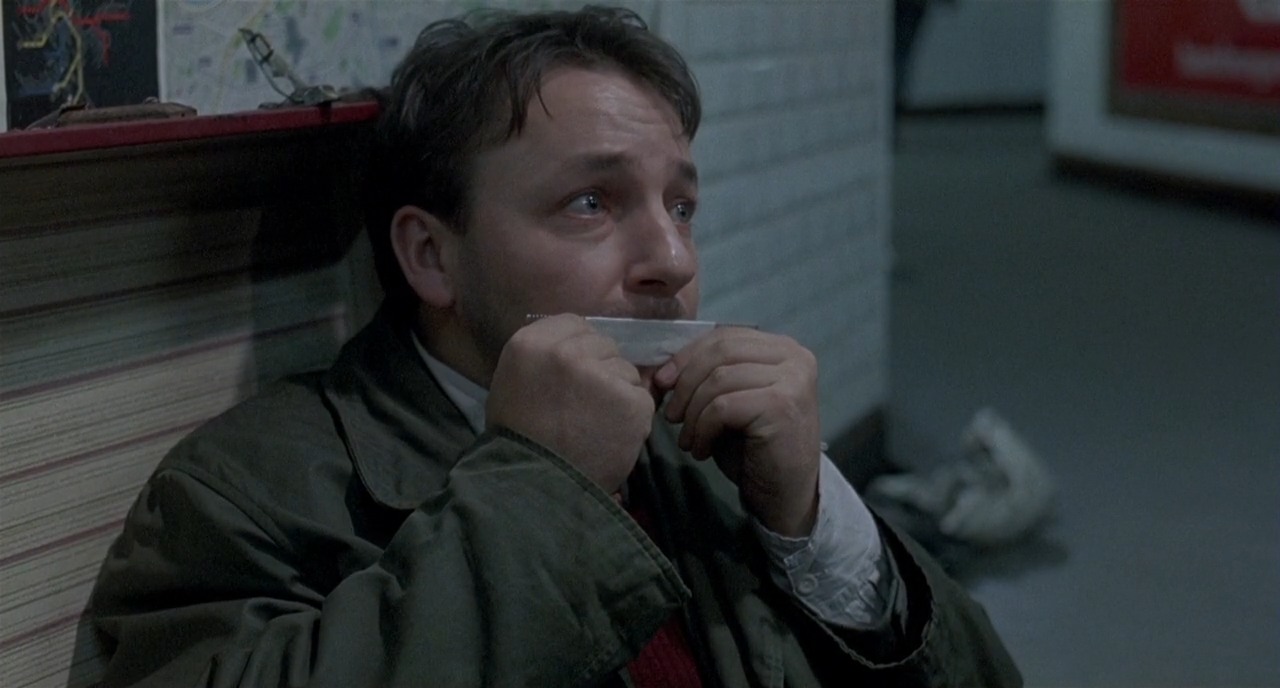 Now homeless and penniless, he takes to playing “music” on a comb in the train station in hopes for a handout. While playing a Polish folk song, he catches the ear of one of his countrymen named Mikolaj. They strike up a conversation about how he got in that situation and Mikolaj offers to pay his way back to Poland, but he cannot leave the country in such a public way because the authorities are still looking for him. So they come up with the plan that he should stow away in the suitcase, and leave behind the alienation and isolation of France. This seems like a strange way for a French financed movie, in a series about the French national colors, on the topic of equality to begin. I wonder if Kieslowski didn’t harbor some feeling of alienation against his adopted country, himself being Polish like the lead character. Mikolaj agrees to this plan and hopes that his new friend can survive the four-hour flight crammed inside a suitcase with a few personal belongings and a stolen bust that reminds him of Dominique, who he still loves.
Now homeless and penniless, he takes to playing “music” on a comb in the train station in hopes for a handout. While playing a Polish folk song, he catches the ear of one of his countrymen named Mikolaj. They strike up a conversation about how he got in that situation and Mikolaj offers to pay his way back to Poland, but he cannot leave the country in such a public way because the authorities are still looking for him. So they come up with the plan that he should stow away in the suitcase, and leave behind the alienation and isolation of France. This seems like a strange way for a French financed movie, in a series about the French national colors, on the topic of equality to begin. I wonder if Kieslowski didn’t harbor some feeling of alienation against his adopted country, himself being Polish like the lead character. Mikolaj agrees to this plan and hopes that his new friend can survive the four-hour flight crammed inside a suitcase with a few personal belongings and a stolen bust that reminds him of Dominique, who he still loves. However, once the plane lands in Warsaw, in an unsurprising but hilarious twist, Mikolaj learns that the luggage has gone missing. We then catch up to Karol in a garbage dump outside Warsaw, where some luggage thieves have inadvertently taken him, probably thinking the weight of the bag was a good indicator of the value of its contents. Of course, they try to rob him, but besides the stolen bust (which they break) and two francs which he fights for, he has nothing for them to steal. Perhaps out of pity, they beat him, but do not kill him, and then leave him lying in the snow. Karol struggles to lift his now bloodied face and looks out to see the white snow swept garbage dump and says, “home at last!”
However, once the plane lands in Warsaw, in an unsurprising but hilarious twist, Mikolaj learns that the luggage has gone missing. We then catch up to Karol in a garbage dump outside Warsaw, where some luggage thieves have inadvertently taken him, probably thinking the weight of the bag was a good indicator of the value of its contents. Of course, they try to rob him, but besides the stolen bust (which they break) and two francs which he fights for, he has nothing for them to steal. Perhaps out of pity, they beat him, but do not kill him, and then leave him lying in the snow. Karol struggles to lift his now bloodied face and looks out to see the white snow swept garbage dump and says, “home at last!” Then with the help of Mikolaj and a trusted employee of his new company, Karol fakes his own death and leaves his fortune to Dominique. When she comes to Warsaw for the funeral, he sneaks into her hotel room and, after the initial shock, they make love, finally consummating their relationship. However, in the morning, Dominique awakes to the police at her hotel room door, but Karol is gone and despite her pleading in French that he is alive, Dominique is arrested for Karol’s murder. At the end, we see Dominique signing to Karol through the window of the prison in which she is being held. She tells him that she still loves him and is willing to marry him again, if she can get out of prison. Karol begins to cry. He has succeeded in achieving equality with his ex-wife, but it is a bittersweet victory. This film is not uplifting like Blue or Red it is a dark comedic tragedy.
Then with the help of Mikolaj and a trusted employee of his new company, Karol fakes his own death and leaves his fortune to Dominique. When she comes to Warsaw for the funeral, he sneaks into her hotel room and, after the initial shock, they make love, finally consummating their relationship. However, in the morning, Dominique awakes to the police at her hotel room door, but Karol is gone and despite her pleading in French that he is alive, Dominique is arrested for Karol’s murder. At the end, we see Dominique signing to Karol through the window of the prison in which she is being held. She tells him that she still loves him and is willing to marry him again, if she can get out of prison. Karol begins to cry. He has succeeded in achieving equality with his ex-wife, but it is a bittersweet victory. This film is not uplifting like Blue or Red it is a dark comedic tragedy. If you remember in Blue, Julie is so absorbed in her own emotions that she doesn’t even notice the old woman and the recycling bin. But she also shows up in White while Karol is shivering on the streets of Paris. Karol notices her but only grins as she tries to put her bottle in the bin. I tend to think that Karol is happy to see someone to whom he finally feels equal. Finally, this is the odd man out of Kieslowski’s trilogy, because it is less artsy and more straight-forward it makes a good introductory film to get into Kieslowski’s work. But even though the ending seems like a hopeless tragedy, the true ending of White is actually revealed at the end of Red, where we see Karol and Dominique have reconciled and are re-married.
If you remember in Blue, Julie is so absorbed in her own emotions that she doesn’t even notice the old woman and the recycling bin. But she also shows up in White while Karol is shivering on the streets of Paris. Karol notices her but only grins as she tries to put her bottle in the bin. I tend to think that Karol is happy to see someone to whom he finally feels equal. Finally, this is the odd man out of Kieslowski’s trilogy, because it is less artsy and more straight-forward it makes a good introductory film to get into Kieslowski’s work. But even though the ending seems like a hopeless tragedy, the true ending of White is actually revealed at the end of Red, where we see Karol and Dominique have reconciled and are re-married. Blue, the first of the trilogy, takes place in Paris. It stars
Blue, the first of the trilogy, takes place in Paris. It stars  Because of its name, Blue, you can’t help but look for that color in the film’s carefully crafted images. With his expert usage of color, Kieslowski has forced the audience to pay attention to the slow-moving story that is unraveling on the screen. The most noticeable visual technique would be the odd fade-out/fade-ins that occur four times in the film. At each of the four points, Julie is at a crossroads, having to decide whether to push back the memories of her life before the accident, or to acknowledge them.
Because of its name, Blue, you can’t help but look for that color in the film’s carefully crafted images. With his expert usage of color, Kieslowski has forced the audience to pay attention to the slow-moving story that is unraveling on the screen. The most noticeable visual technique would be the odd fade-out/fade-ins that occur four times in the film. At each of the four points, Julie is at a crossroads, having to decide whether to push back the memories of her life before the accident, or to acknowledge them. At one point, she immerses herself completely and stays underwater for as long as possible. But soon, she has to come up for air. In the same way, Julie can’t help but re-establish the connections with her past, and like the continent upon which she resides, she shifts from a state of liberty into a state of union. She gives the family home to her husband’s mistress’, completes her husband’s unfinished composition, and even builds a relationship with Olivier.
At one point, she immerses herself completely and stays underwater for as long as possible. But soon, she has to come up for air. In the same way, Julie can’t help but re-establish the connections with her past, and like the continent upon which she resides, she shifts from a state of liberty into a state of union. She gives the family home to her husband’s mistress’, completes her husband’s unfinished composition, and even builds a relationship with Olivier.